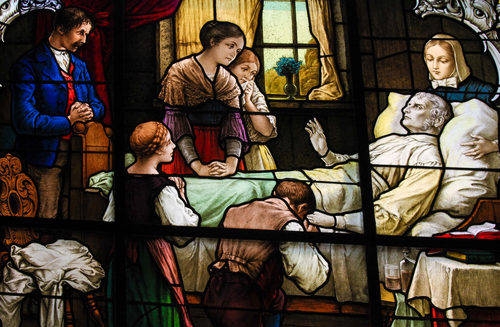
5 Facts About Hospice You May Not Know
We want you to know the facts about hospice.
We live in a death denying culture. Every day, we all participate in a myriad of rituals – from wearing seat belts to eating kale – designed to make us believe we are less likely to die, and to remove us from the reality that is our own mortality. But for an estimated three million Americans, nearly one in one hundred, this year will be their last. Of the men and women who will die this year, a significant majority, perhaps two thirds, will be aware of their sort, whether by a terminal diagnosis of cancer, or a life-limiting illness such as kidney, heart, or liver failure. For these Americans whose deaths will not be a sudden interruption to their daily routine, how to cope with death will become a priority. Hospice is a discipline dating back to the Crusades. For centuries, it has offered the dying comfort, respite, and the ability to cope with death. Millions of Americans will seek out hospice services this year, and we at 1-800-HOSPICE™ want to share some facts about this discipline to assuage the many fears often associated with deciding whether or not to enter hospice. Death is inevitable, but one need not face it alone. The following are five facts about hospice you may not know.
1. Hospice is about life.
Facts about hospice: It may seem contrarian to say that hospice is about life, but that’s exactly what it emphasizes. The goal of hospice is not to cure, but to comfort. Services focus on making the last six months or so of a patient’s life as comfortable and enjoyable as possible. Essentially, hospices want to help their patients get the most out of their final weeks and months. While one of the major focuses of hospice is how to cope with death, another is how to cherish the time we have left with the people we love and participate in the activities we enjoy to the best of our abilities.
2. Hospice is a service, not a place.
Facts about hospice: Many Americans believe hospice to be “a place we go to die.” This couldn’t be further from the truth. While there are facilities that offer hospice services, hospice is not a physical location, like a hospital, but a set of services that can take place in a variety of locations. Hospice services can be received at hospitals, dedicated facilities, or in-home. In fact, dying at home is a rapidly growing trend in the US, especially in states like Oregon, whose laws are more conducive to allowing patients to die in their homes.
3. Hospice is multidisciplinary
Facts about hospice: The term “hospice” is an umbrella term to describe a variety of services designed to help those with life-limiting illness enjoy their time left on earth and to cope with their impending death. Hospices employ a variety of staff to fulfill this imperative, including daily care nurses, palliative care (pain management) doctors, chaplains, primary care physicians, counselors, therapists, among others. These professionals work as a team to deliver comprehensive end-of-life services and to truly help their patients achieve comfort and respite.
4. Hospice is for families, too.
Facts about hospice: End-of-life care helps patients and their families. This life stage is a critical and emotional time for a patient’s loved ones, and they have needs as well. Hospice services offer grief counseling among other services to help patients’ loved ones cope with a life-limiting illness, and to help them move forward after a loved one has died. Hospices also hold community events, plan outreach and education programs, and participate in community events to raise awareness for hospice services and to build strong community ties that help bring people together to support one another during the end-of-life stage.
5. Hospice is not a new service.
Facts about hospice: While the popularity of hospice has seen tremendous growth in the past few decades thanks to the efforts of Cicely Saunders in the latter half of the 20th century, it is by no means a new discipline. The history of hospice dates back to the Crusades (11th Century) when a religious order of warrior monks, the Knights Hospitaller, set up hospitals along the pilgrimage road to Jerusalem. These early establishments were not curative, meaning they did not necessarily seek to heal the sick and dying, but instead offered a place of respite where people either healed and moved on, or died. Over the next several centuries, the concept of hospice continued to evolve, experiencing a new iteration in 17th Century France where the concept of caring for the sick and dying took hold with the formation of a religious order called the Company of the Daughters of Charity of Saint Vincent de Paul.





